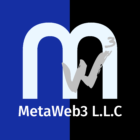WordPress vs. Drupal vs. Joomla: Understanding Your CMS Options (Part...
Read MoreTraditional Marketing vs. Digital Marketing: Which Strategy is Right for Your Business?

Table of Contents
Introduction
Marketing is the lifeblood of any business, playing a crucial role in building brand awareness, driving customer engagement, and fostering lasting customer relationships. Through effective marketing, companies can communicate value, connect with their audience, and ultimately achieve growth. Today, businesses have a wealth of options for reaching their target audience, utilizing both **traditional marketing** methods, like print media, TV, radio, and direct mail, and **digital marketing** techniques, such as social media, email campaigns, SEO, and content marketing. Each type offers unique strengths; traditional marketing provides tangibility and broad reach, while digital marketing allows for highly targeted, data-driven campaigns. Together, these approaches enable companies to create well-rounded strategies that resonate with their customers in today’s fast-paced world. Let’s dive into the core aspects, benefits, and differences of traditional and digital marketing.
What is Traditional Marketing?
Traditional marketing refers to the classic forms of marketing that existed before the digital age and focus on offline media to reach audiences. This approach includes print advertisements (such as newspapers, magazines, and brochures), broadcasting (TV and radio ads), direct mail (catalogs, postcards, and flyers), outdoor advertising (billboards and posters), and telemarketing. Traditional marketing often reaches a broad audience by placing messages in locations where people can physically interact with them. This method’s impact is generally large-scale, building brand awareness among diverse demographics and creating memorable, tangible interactions that can leave a lasting impression.
Critical Characteristics of Traditional Marketing
- Broad Reach with Mass Appeal
Traditional marketing excels in reaching a broad audience. For instance, TV ads can reach millions of viewers in a single airing, making it ideal for businesses that want to create brand awareness on a large scale. This approach is efficient for products or services that appeal to a wide range of consumers, like household goods or automobiles. - Tangible and Physical Presence
Traditional marketing often includes physical materials like flyers, direct mail, and outdoor billboards that can be held or seen in real life, creating a tactile experience. This tangible presence can be memorable and help foster brand loyalty, as it engages multiple senses and is more challenging to ignore than a digital ad. - Credibility and Trustworthiness
Traditional marketing methods, especially print and TV, are often perceived as more credible because they are associated with established media channels. Consumers trust brands that appear in traditional outlets because they usually see these channels as more legitimate and authoritative. - Targeting by Demographics and Location
Traditional marketing can also be targeted, though more precisely than digital marketing. Advertisers can place ads in local newspapers or regional TV stations to reach specific geographic areas or demographics based on the typical audience of each medium. For example, a local business might advertise in a community newspaper to connect with local customers. - Longer Shelf Life
Traditional marketing materials can last longer than digital ads, which can disappear after a scroll or click. Magazines, for instance, might stay on a coffee table or in a waiting room for weeks or months, allowing multiple people to see the ad over time.
Benefits of Traditional Marketing
- Brand Recognition: Traditional marketing methods have the power to establish and reinforce brand recognition, as they are visible to many people multiple times.
- Broad Audience Reach: Television and radio ads reach mass audiences, making them ideal for brand awareness campaigns.
- Emotional Connection: TV ads and print storytelling can evoke emotions, making messages more memorable and engaging.
Examples of Traditional Marketing in Action
- Billboards: Large billboards along highways or city centers can reach thousands of commuters daily, capturing attention and reinforcing brand messages through repeated exposure.
- TV Commercials: A well-crafted TV commercial can reach millions and impact viewers, especially during a significant event like the Super Bowl.
- Direct Mail Campaigns: A targeted direct mail campaign can engage a specific community with physical materials that offer discounts, information, or product samples.
Drawbacks of Traditional Marketing
- High Costs: TV ads, print placements, and billboard rentals can be expensive.
- Limited Targeting: Traditional methods often have a broad reach but need more specific targeting.
- Difficult to Measure: Tracking the ROI of traditional marketing efforts can be challenging, making it hard to assess effectiveness.
- Limited Interaction: There is typically no direct way for audiences to engage with or respond to traditional ads in real-time.
What is Digital Marketing?
Digital marketing is promoting products or services through online platforms and digital channels. It leverages various internet-based technologies to reach, engage, and convert target audiences in real time, creating highly interactive and data-driven strategies that can be fine-tuned for optimal performance. Digital marketing includes various techniques, such as social media marketing, search engine optimization (SEO), content marketing, email marketing, pay-per-click (PPC) advertising, affiliate marketing, and influencer marketing. This approach allows businesses to connect with consumers wherever they spend online, utilizing data to create highly targeted, personalized campaigns.
Core Components of Digital Marketing
- Search Engine Optimization (SEO): SEO involves optimizing website content to rank higher on search engines like Google. Which helps attract organic traffic from people searching for relevant information, products, or services.
- Social Media Marketing: Utilizing platforms like Facebook, Instagram, LinkedIn, and Twitter, social media marketing allows brands to reach, engage, and interact with their audience, building community and brand loyalty.
- Content marketing: It focuses on creating and sharing valuable, informative content that aligns with the interests and needs of the target audience. This content can include blog posts, videos, infographics, and more, driving traffic and establishing authority.
- Email Marketing: Through email campaigns, brands can connect directly with customers and prospects, sending personalized messages, offers, and updates. Email marketing is highly effective for nurturing leads and driving conversions.
- Pay-Per-Click (PPC) Advertising: PPC ads are a paid form of digital marketing where businesses pay each time someone clicks on their ad. Platforms like Google Ads allow for highly targeted campaigns, showing ads to users searching for specific keywords.
- Affiliate Marketing: Affiliate marketing is a performance-based strategy in which brands partner with third-party websites or influencers to promote their products or services, earning commissions for each sale.
- Influencer Marketing: Collaborating with influencers—individuals with a solid social media following—helps brands reach specific audiences through credible recommendations and testimonials.
Benefits of Digital Marketing
- Global Reach: Digital marketing allows brands to expand beyond local borders, accessing an international audience with minimal costs.
- Precise Targeting: Data-based audience segmentation helps marketers show ads only to the most likely interested, maximizing ROI.
- High Engagement: Digital marketing encourages interactions through comments, shares, likes, and more, enabling a two-way conversation between brands and customers.
- Flexibility and Adaptability: Campaigns can be instantly adjusted based on performance metrics, allowing continuous improvement.
- Increased Customer Loyalty: Personalized communication and real-time engagement create a robust and loyal customer base.
Examples of Digital Marketing in Action
- SEO for Organic Visibility: An e-commerce business using SEO to rank on the first page of Google for “sustainable fashion,” driving organic traffic and brand awareness.
- Social Media Campaigns: A restaurant promotes new menu items on Instagram Stories and interactive posts, engaging local followers with polls and limited-time offers.
- Email Drip Campaigns: An online fitness company using an email drip campaign to nurture leads with workout tips and exclusive offers, driving conversions over time.
- PPC Ads for Immediate Impact: A software company running a PPC campaign on Google Ads targeting the keyword “best project management tool,” generating clicks from users with strong buying intent.
Drawbacks of Digital Marketing
- Ad Fatigue: Overexposure to digital ads can lead to audience fatigue and reduced effectiveness.
- Privacy Concerns: Targeted ads and data tracking can raise privacy issues, leading to stricter regulations.
- Competitive Noise: The vast number of online ads makes it challenging to stand out without a unique strategy.
- Learning Curve: Keeping up with evolving algorithms, tools, and platforms requires time and expertise.
Blending Traditional and Digital Marketing
Blending traditional and digital marketing strategies allows businesses to create a comprehensive approach that leverages the strengths of both methods, enhancing brand reach and engagement. Traditional marketing offers broad visibility and tangible interactions through mediums like TV, print, and outdoor ads, which build trust and familiarity, especially among audiences who appreciate established press. On the other hand, digital marketing provides precision, real-time feedback, and interactive capabilities that enable brands to reach specific audiences and adapt quickly based on analytics. By integrating these methods, businesses can create a seamless experience—using traditional channels to create initial brand awareness and digital platforms to deepen engagement, personalize interactions, and track results. This balanced approach ensures a consistent brand presence across offline and online spaces, meeting customers wherever they are and reinforcing messaging through multiple touchpoints.
Conclusion
In conclusion, understanding the unique strengths and challenges of traditional and digital marketing is essential for creating a well-rounded strategy that resonates with today’s consumers. While conventional marketing offers reach and credibility, digital marketing excels in targeting, adaptability, and measurable engagement. By blending both approaches, businesses can maximize brand awareness, build lasting relationships, and stay agile in a rapidly evolving marketplace. Leveraging the right mix of traditional and digital marketing methods empowers brands to connect meaningfully with audiences across channels, ensuring a consistent presence that drives trust and results.
The Rise of Headless CMS: Everything You Need to Know
The Rise of Headless CMS: Everything You Need to Know...
Read MoreTraditional Marketing vs. Digital Marketing: Which Strategy is Right for Your Business?
Traditional Marketing vs. Digital Marketing: Which Strategy is Right for...
Read MoreThe Marketo Advantage: Streamline, Automate, and Grow Your Business
The Marketo Advantage: Streamline, Automate, and Grow Your Business Table...
Read More




